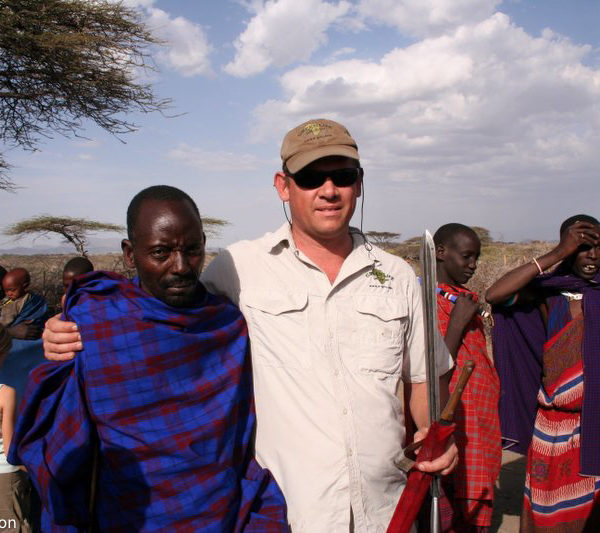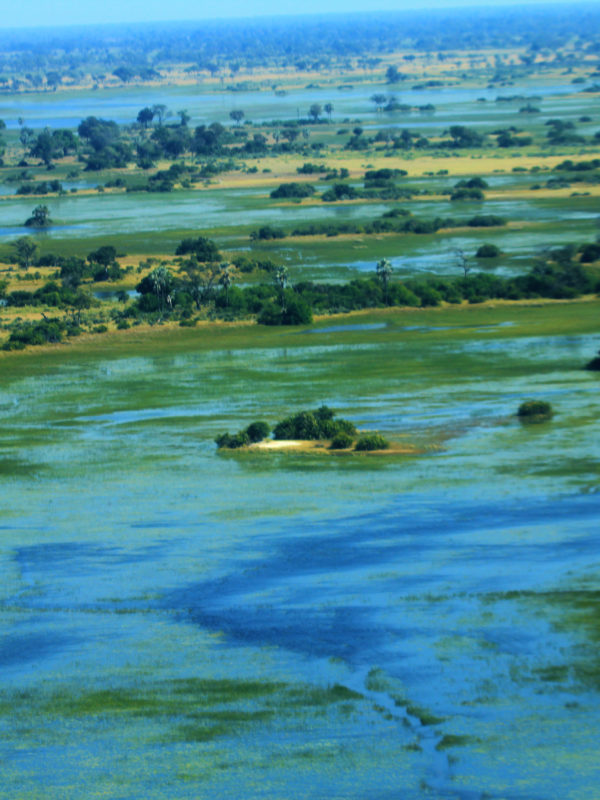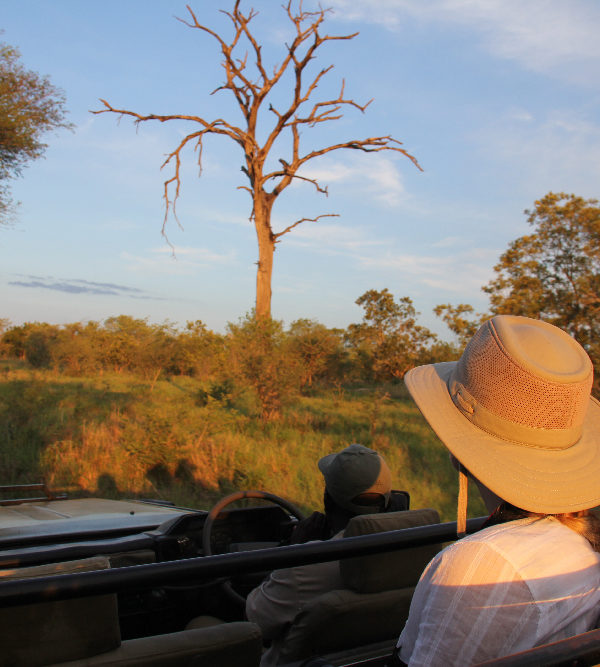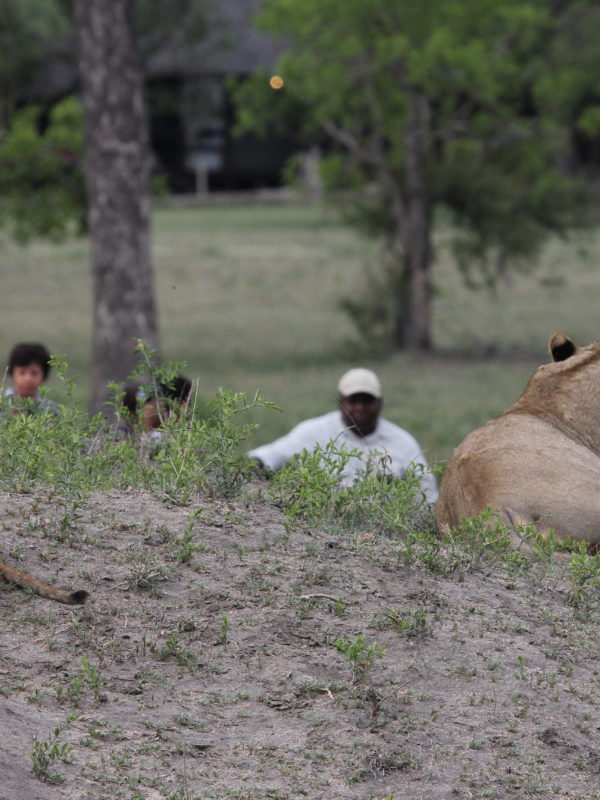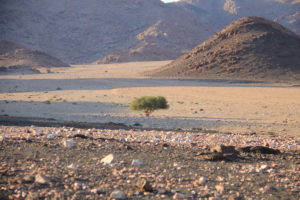BRANDBERG NATURE RESERVE
The brooding Erongo mountain range of the Brandberg (Burnt Mountain) massif, emerges mysteriously from the surrounding flat arid scrubland. These mountains are magnificent when viewed from any direction and the Konigstein peak at 8,362 feet (2,573m) is the highest in Namibia and forms just part of this range.
In the ravines and caves of these mountains many prehistoric rock paintings have been found and none more famous than the ‘White Lady’ of the Brandberg. She was named by the surveyor who discovered her 1917, but remained in obscurity until 1948, when the painting was replicated and brought to light. More recent investigations into her stature suggest that she is no lady after all!
TORRA WILDLIFE CONSERVANCY
This dry rocky conservancy is about 60 miles (96km) north of the Brandeberg Mountains, on the north bank of the Huab River. It is a conservation partnership formed between the local community and Wilderness Safaris, who operate a lodge in the area. It is an area of endless vistas across stark plains broken suddenly by ancient valleys and soaring peaks, with the Brandberg Mountains rising like a mirage on the far horizon. Mists roll in from the Skeleton Coast some 56 miles (90km) to the west, and drift along the river valley to provide sustenance to a variety of life that depend on this daily moisture. The Huab River only flows once or twice during the short rainy season and seldom breaks through the dunes to reach the ocean.
ANIMALS & BIRDS
The natural law concerning food and water supply dictates the movement and cycles of life in this arid area.
As such there is no guarantee of seeing any of the animals that inhabit Damaraland and whatever you may see is to be a treasured moment. The rare and endangered desert elephant have adapted like all the other animals here to exist on limited fodder and scant water. These rare pachyderms roam around the more vegetated areas by dry riverbeds and stand on their back feet and stretch their trunks skywards trying to reach the very last leaf on each tree. Desert-adapted black rhino range in and out of communal farming areas across a large area and are one of the few populations to survive on land that has no formal conservation status.
Desert Elephant. Pic: David Anderson
Classified as critically endangered by the IUCN, the black rhinos of north-west Namibia have more than doubled in number since 1985. Even lion and cheetah move in and out of the area when antelopes such as oryx, kudu and springbok are around.
SEASONS
May to December are the best months to visit this region.
Summer: November to April are hot with an average mid-summer daytime temperature around 95°F (35°C) especially in the river valleys.
Winter: The cooler months of May to September are pleasant with an average temperature during the day of 79°F (26°C). Nights can be very cold averaging 43°F (6°C) with a frost not uncommon in June, July and August.
Rainy Season: The variable annual rainfall is between 1.18inches (30mm) and 4 inches (100mm) per year starting in January and reaching a peak in March. Rain usually comes as heavy late-afternoon thunderstorms.
DAMARALAND SPECIALITIES
· Star-gazing par excellence
· Desert elephants might be seen
· Rare free-ranging black rhino
· Exceptional comfort in desert loges
· Meeting the roaming Damara goat and cattle herders
FACTS
This is a remote area and many visitors fly in to their camp or lodge although overland travel is possible.
This is a low-risk malarial area.

